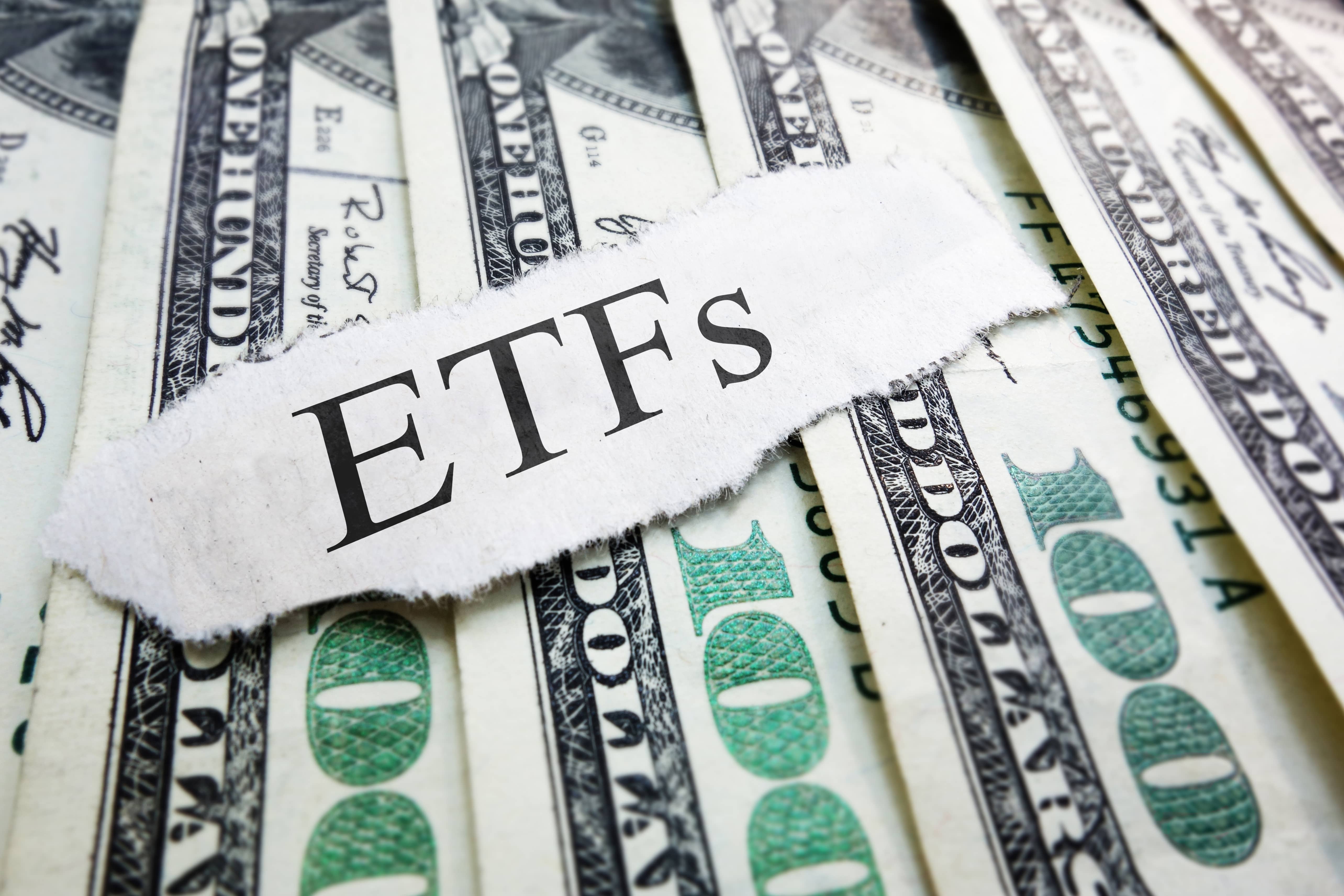ETFs in Europe just capped off their second-best year of asset gathering as investors continued pouring into low-cost beta while newfound strength appeared for fixed income and more specialist exposures.
By mid-December, Europe-listed ETFs had amassed $151.9bn inflows, only modestly lagging the $177.2bn net new assets in 2021, according to data from Refinitiv.
More significant is that the ETF wrapper continued to gain ground on mutual funds, which suffered $100bn outflows during the first 11 months of 2023.
In a year when the ‘most forecasted recession ever’ did not come to pass and central banks remained stubbornly hawkish, bond ETF allocations, retail participation through digital channels and new active ETF entrants were the emergent trends to watch.
Core is king
Low-cost building blocks once again led the way in asset gathering, with the $64.9bn iShares Core MSCI World UCITS ETF (SWDA) capturing the most inflows across all UCITS ETFs for the third year in a row with $9.4bn new assets, according to data from Bloomberg Intelligence.
Combined with its $6.5bn take in 2022 and $10.2bn in 2021, the ETF has welcomed $25.9bn inflows in three years, accounting for almost 39% of SWDA’s total assets since launching in 2009 – notwithstanding its 24.7% return over the three-year period.
Interestingly, European investors also allocated $2.7bn to the broader $10.3bn iShares MSCI ACWI UCITS ETF (SSAC), which offers a more comprehensive global equity exposure by capturing 23 developed and 24 emerging markets.
Unsurprisingly, the winner’s circle was also populated by vanilla US equity trackers, with the $70.7bn iShares Core S&P 500 UCITS ETF (CSPX) welcoming $4.7bn inflows while the $24.5bn Invesco S&P 500 UCITS ETF (SPXS) – whose synthetic replication and Irish domiciling mean it pays 0% withholding tax on dividends – added $4.1bn.
Barbelled bonds are back
Elsewhere, fixed income ETFs booked their strongest year of inflows on record with $65bn inflows by 15 December, accounting for 43% of all new assets into ETFs and punching well above their 23% market share in Europe.
This came after broad bond indices fell by up to 30% in 2022. The Bloomberg Global Aggregate index gained 5% in November 2023, marking its second-best month in 30 years as credit card delinquencies and rising high yield defaults revealed cracks in the US economy.
Looking to front-run a policy pivot by the European Central Bank (ECB), investors targeted high quality credit by pouring $5bn into the $17.9bn iShares Core € Corp Bond UCITS ETF (IEAC), marking the second-highest inflow of any ETF in Europe in 2023.
Also looking to capture an end of hawkishness by the Federal Reserve, investors allocated $3.8bn to the $8.5bn iShares $ Treasury Bond 20+yr UCITS ETF (IDTL). Likewise, targeting a reversal of the deepest yield curve inversion in four decades saw investors pour $1.6bn into the Lyxor US Curve Steepening 2-10 UCITS ETF (STPU).
However, many remained cautious about adding duration, instead choosing to capitalise on elevated yields on the short end of the yield curve by investing $2.9bn into the $12.8bn iShares $ Treasury Bond 0-1yr UCITS ETF (IB01).
Elevated rates play
Outside of conventional fixed income, 2023 saw the return to prominence of a legacy interbank lending rate tracker from DWS.
Investors poured $3.6bn into the $5.1bn Xtrackers EUR Overnight Rate Swap UCITS ETF (XEON), which offers exposure to the interbank rate for one-day loans between 28 EU panel banks in euros, calculated by the ECB.
After launching in 2007, XEON quickly became one of the fastest-growing ETFs in Europe. Following a subdued decade of asset gathering amid the zero-rate, post Global Financial Crisis (GFC) era, the ETF shot into life as ECB hikes saw the euro short-term rate (€STER) spike to 3.15% by the end of May, the policy rate’s highest level since being introduced in 2019.
Modified beta
Away from vanilla broad benchmarks, alternative takes on US equities stole the spotlight in a market increasingly dominated by the narrow ‘magnificent seven’ tech names.
First, investors turned to an ‘index-plus’ approach to active management, allocating $2.6bn to the $5.1bn JPM US Research Enhanced Index Equity UCITS ETF (JREU).
JREU uses the S&P 500 as its benchmark and then applies a fundamental stock selection process to over-and-underweight securities the portfolio managers view as having the potential to outperform and those it views as overpriced.
Elsewhere, those seeking to directly reduce concentration in mega-cap tech names – seven of which comprised all returns for the S&P 500 in H1 2023 – opted for the $5.7bn Xtrackers S&P 500 Equal Weight UCITS ETF (XDEW), which welcomed $2bn net new assets.
Emerging markets stand firm
Rounding off our list, the $18.9bn iShares Core MSCI EM IMI UCITS ETF (EIMI) booked $2.2bn inflows last year, even as the post-COVID-19 lockdown reopening trade in China failed to materialise.
With China comprising 25.4% of the ETF’s benchmark and the MSCI China collapsing a further 16.8% during 2023, the single country overweight continues to stimy the potential gains made by other recent winners in the broad church of emerging markets.
While popular India and Mexico benchmarks booked double-digit returns last year, there are doubts about whether this momentum can be maintained on a tactical basis, with already elevated multiples and both countries heading into elections in 2024.
However, EIMI investors will remain hopeful of a delayed Sino bounce back and potential positive impacts of US dollar weakening amid Fed rate cuts.







